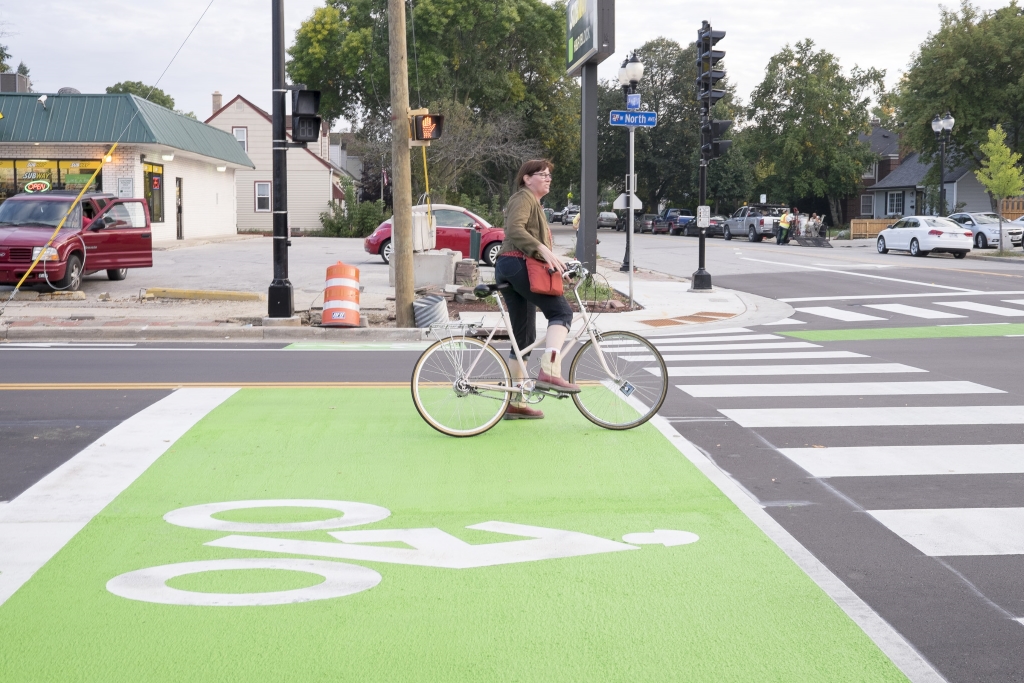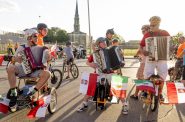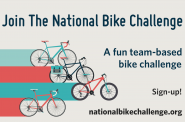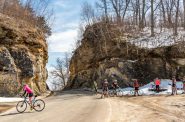Tosa Installs First Bike Box in Metro Area
They make busy intersections safer for bikes and cars. Will Milwaukee install some?
Wauwatosa recently became the third community in Wisconsin to install a bike box, at the intersection of North Avenue and 68th Street. Madison installed the first bike boxes in 2010, then in 2013 Menomonie added a bike box on 13th Avenue East at Broadway near the UW Stout campus. The east Tosa project is the latest, but I expect you will see bike boxes in Milwaukee and other communities soon now that they are approved by the Federal Highway Administration.

It may take a bit of education for people to learn how to use the bike boxes at 68th and North Avenue.
With so few of these new traffic safety facilities in the state, it’s no wonder I’ve heard from some people who are still confused about how they are supposed to work. I thought it might help to go over the rules for using a bike box and end with a cute video about bike boxes from the City of Edmonton in Canada.
What exactly are bike boxes and why are traffic engineers installing them now? A bike box is an area (typically green) ahead of the motor vehicle traffic lane at signalized intersections that provides people on bicycles with a safe and visible way to get ahead of queuing traffic during the red signal phase. They are installed at busier intersections either where people have a difficult time making left turns on bicycles or where there are high numbers of motor vehicles turning right across the bike lane.
What are the benefits of bike boxes?
- Make people on bicycles more visible.
- Reduces signal delay for bicycles.
- Make it easier to turn left on a bicycle by allowing people on bicycles to transition from a right-side bike lane to a left-side bike lane during red signal phase.
- Helps prevent “right-hook” conflicts with turning vehicles at the start of the green signal phase.
- Groups bicycles together to clear an intersection quickly, minimizing impediments to transit or other traffic.
Rule #1 for Bicycles: Bike boxes only work when the traffic signal is red. The most important thing for people on bicycles to remember is that bike boxes don’t work when the traffic signal is green. If you are traveling down the bike lane toward a signalized intersection and the signal is green, you need to yield to and merge into the motor vehicle traffic to make a left turn. You also need to remain watchful for motor vehicle traffic that might be turning right across the bike lane.
Rule #1 for Motor Vehicles: Stop behind the bike box. The most important rule to remember if you are approaching a bike box in a motor vehicle is to stop at the advance stop bar behind the bike box. This is really no different than stopping at any other advance stop bar, but it is very important if people on bicycles are to have room to move over to make left turns.
I think the video below from the City of Edmonton offers about the best explanation of how to use a bike box.
Now that bike boxes are approved by the federal government and WisDOT, we should start seeing them in other locations. My experience watching traffic at 68th Street is people on bicycles seem to be more confused about how to use them than people in cars, probably because we are all used to advance stop bars before crosswalks anyway. It is less intuitive to skip ahead of traffic for people on bicycles, but as more of these are built and more people ride through them, that movement should become second nature.
The Bike Fed has lots of other safety information about bicycling, walking and driving on our Share & Be Aware pages. We also have Share & Be Aware videos, and a number of different free safety information pamphlets in English and Spanish. Contact Jessica Binder in our Milwaukee office to get copies for you, your workplace or event. You can also request one of our Share & Be Aware regional staff to come to your event, school or workplace to do a safety training.
This story was originally published by the Bicycle Federation of Wisconsin.
Bike Czar
-
Join a Bike Ride Under the Polish Moon
 Jun 1st, 2018 by Dave Schlabowske
Jun 1st, 2018 by Dave Schlabowske
-
9 Reasons to Join National Bike Challenge
 May 4th, 2018 by Dave Schlabowske
May 4th, 2018 by Dave Schlabowske
-
Biking Through the Mindoro Cut
 Apr 27th, 2018 by Dave Schlabowske
Apr 27th, 2018 by Dave Schlabowske





















